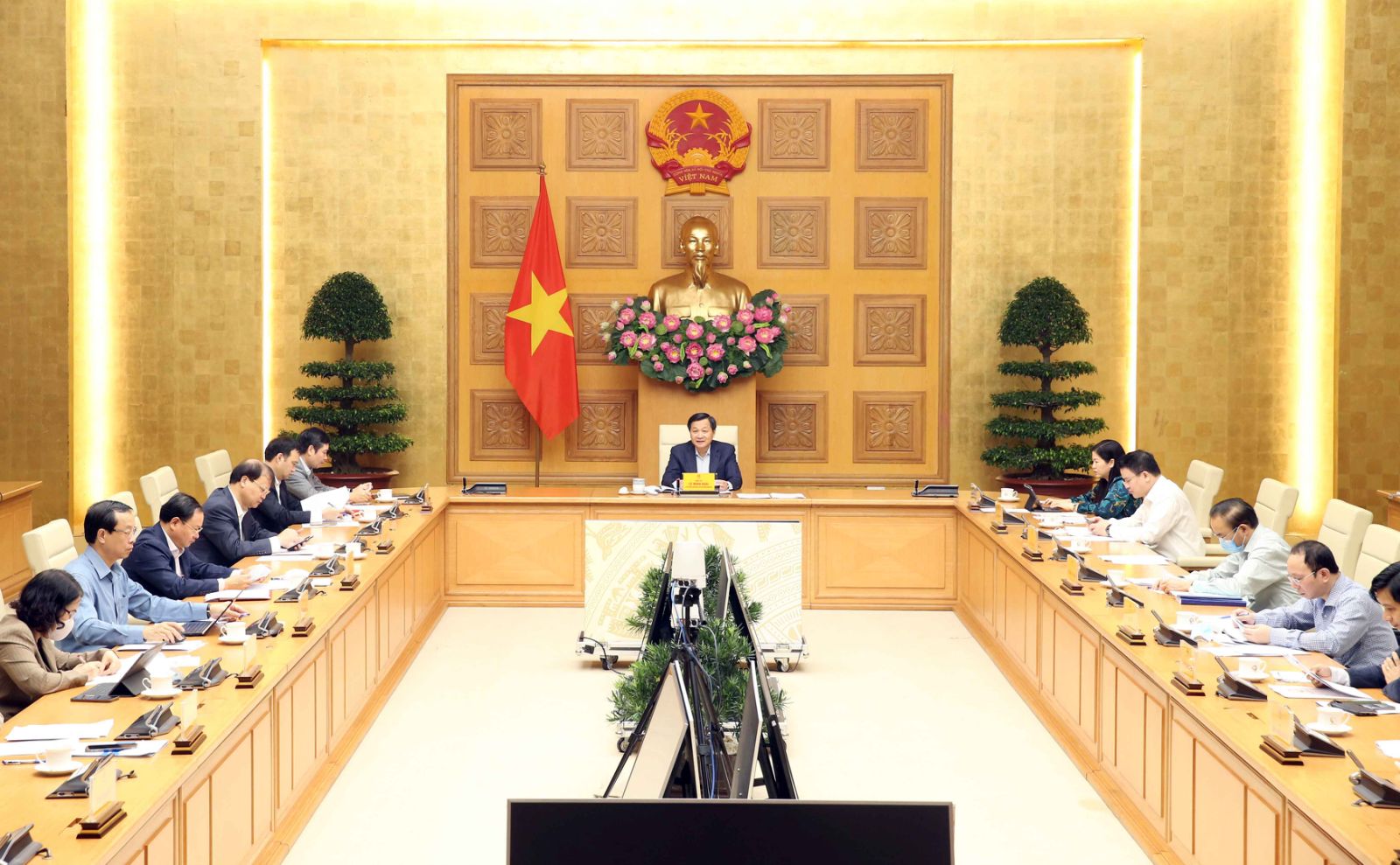Vietnam inflation rate in 2021 set to stay under control
The inflationary pressure, however, is huge for 2022 amid the deepening energy crisis and the hoarding of strategic goods by some countries.
From now until the end of 2021, the consumer price index (CPI) is expected to expand by 2%, as such, Vietnam is fully on track to realize the goal of keeping the inflation rate under 4% this year.
| Deputy Prime Minister Le Minh Khai at the meeting. Source: VGP |
Deputy Prime Minister Le Minh Khai stressed the view in a government meeting on price management held on October 26, referring to the average CPI expansion over the nine-month period at 1.82% year-on-year.
“The Government’s price management efforts have been essential in stabilizing macro-economic conditions and addressing difficulties facing the businesses and people the Covid-19 pandemic,” said Khai.
For next year, Khai expects more countries would reopen for economic recovery, leading to high demand for input materials and energy.
“While Vietnam has been able to contain recent outbreaks, uncertainties surrounding the pandemic would continue to be a challenge for the value chains and also the price management efforts,” he added.
Khai urged ministries and provinces/cities to monitor the supply-demand of essential goods to ensure sufficient supplies in the remaining months of 2021, especially in the Tet holiday and early 2022.
“The issue is particular significance as the economy was severely battered by the pandemic,” he noted.
According to Khai, market prices of products and goods which are under government control, including petroleum, electricity, food, fertilizer, or medical equipment, should be stabilized and stay in line with the Government’s efforts in taming inflation and supporting the businesses and people.
The Ministry of Finance and the State Bank of Vietnam are responsible for managing the fiscal and monetary policies in a flexible manner to aid economic recovery.
| Overview of the meeting. |
High inflationary pressure in 2022
At the meeting, Vice Minister of Finance Ta Anh Tuan expected the CPI in October to decline by 0.1-0.15%, averaging 1.81-1.83% for the 10-month period.
This came on the back of Vietnam’s CPI growth in the first nine months at 1.82%, the lowest nine-month growth since 2016, while the basic inflation expanded by 0.88%, Tuan said.
Tuan, however, expected market prices would be under pressure from hiking up, especially essential goods such as animal feed, construction materials, or petroleum, for which high costs from input materials, logistics activities are the main issues.
Given the low base of CPI this year, Tuan suggested the inflation staying well under control and much below the 4% target set by the Government and the National Assembly.
Tuan shared the deputy prime minister’s view that the inflationary pressure is huge for 2022 amid the deepening energy crisis and the hoarding of strategic goods by some countries.
“Price management in the remaining months of 2021 and early 2022 should be cautious and flexible,” he added.
The Ministry of Industry and Trade and the Ministry of Finance yesterday announced a sharp rise in the retail price of biofuel E5 - RON92 by VND1,430 to around VND23,110 (US$1.01) per liter, and that of RON95 by VND1,460 to VND24,330 ($1.07) per liter.
With such a move, the price of RON95 reached the highest level in the past seven years, while the prices of WTI oil on the international markets also reached US$85.41 per barrel, the highest since October 2014, and Brent crude oil at $86.43, the highest since October 2018. Both saw an increase of 20% in prices in early September.
The gas supplies shortage in China, India, and Europe along with high demand in the US are also driving the prices upward, as Goldman Sachs expected Brent crude oil to exceed $90 per barrel.
In the domestic market, retail prices of petroleum products have gone up four times since early September, but Government agencies noted the petrol price stabilization fund has helped keep the price increase at a more affordable level compared to those in the international market.
For the upcoming Tet holiday, Hanoi plans to stockpile commodities worth VND39 trillion (US$1.7 billion) to meet local demands by boosting inventories of basic necessities, including rice, beef, pork, chicken, seafood, eggs, processed food, vegetables, and fruits. For the past years, Hanoi has been working on establishing distribution networks of safe and high-quality farm produce, which results in 141 value chains connecting 1,130 suppliers of agro-forestry-fishery products from 45 provinces/cities. The network, along with online shopping channels of websites and apps from 35 enterprises and 565 online platforms, is expected to meet the demands of locals during the pandemic. Along with supplies within the city, Hanoi has reached agreements to buy rice, pork, beef, and vegetables from other provinces/cities, including Nam Dinh, Thai Binh, Ninh Binh, Ha Nam, Bac Ninh, Ha Giang, Son La, or Vinh Phuc. |

.jpeg)










